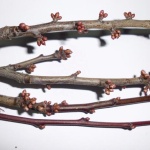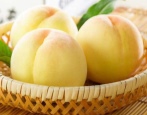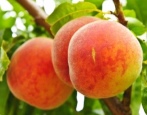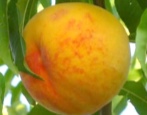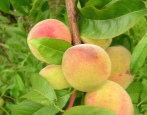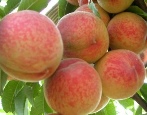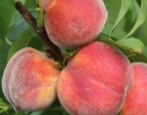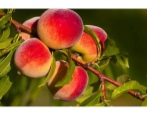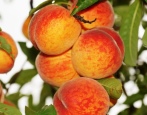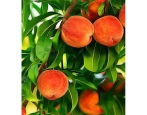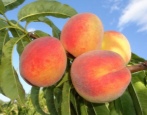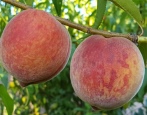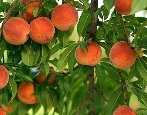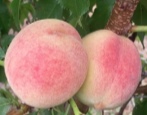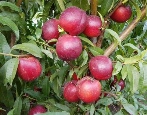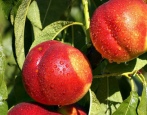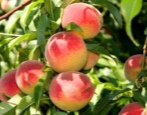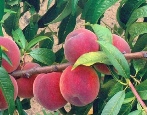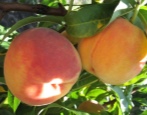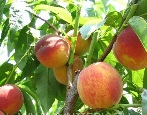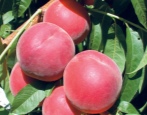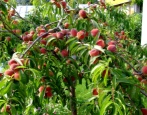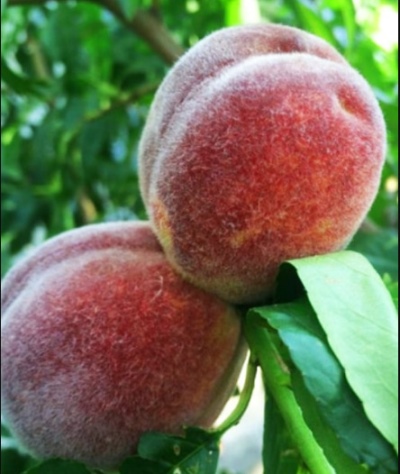
- Authors: N.I. Ryabov (State Nikitsky Botanical Garden)
- Appeared when crossing: Rochester x Common Almond x Common Peach
- Year of approval: 1965
- Growth type: medium-sized
- Ripening period: early
- Self-fertility: self-fertile
- Appointment: dining room
- Yield: high
- Growing regions: North Caucasian
- Bone size: medium
Novice gardeners who dream of delicious peaches from their own garden should pay attention to varieties with simple agricultural techniques and quick adaptation to the climate of the region. These include the variety Fluffy early domestic selection.
Breeding history
The Early Fluffy peach variety was obtained in the State Nikitsky Botanical Garden in 1946. The author of the fruit crop is N.I. Ryabov. In its breeding, the following varieties were used: Rochester, common almonds and common peaches. After many years of variety trials, the early Fluffy peach was added to the State Register of Breeding Achievements in 1965. The recommended region for growing this variety is North Caucasian.
Description of the variety
Fluffy early is a medium-sized tree with brownish-brown branches, light green foliage and a developed root system. The crown of a fast-growing tree is slightly raised, slightly spreading, broadly oval in shape with a strong thickening. On average, a peach tree grows up to 2.5–3 m in height.
Flowering at the tree begins in the first decade of May. During this period, the dense, neat crown is abundantly covered with beautiful single pinkish flowers with 5 petals, which emit a bright and sweetish aroma.
Fruit characteristics
This variety produces medium-sized fruits. A healthy tree ripens fruits weighing 80–100 g. The shape of the fruit is broadly oval or round, non-uniform. A ripe peach has an irregular color: greenish-cream, diluted with dark red blush, stripes and strokes that cover most of the surface.
The peel of fruits is of medium density, rough, with noticeable tomentose pubescence, easily separating from the pulp. The fruits are kept on a thickened short stalk, which is firmly connected to the fruit bone. The abdominal suture is visible on the surface.
The purpose of peaches is table: they are eaten fresh, and fruits are also suitable for canning, since they do not fall apart even during heat treatment. The harvested crop tolerates transportation and can be stored for some time. The softening of the fruit is slow.
Taste qualities
The taste of the variety is standard, balanced: sweet, without astringency and sweetness, but with a barely noticeable bitterness. The flesh, whitish with greenish-creamy splashes, is characterized by a tender, fleshy, slightly fibrous and very juicy texture, complemented by a sweetish aroma. Peaches have a soft skin. The stone is medium in size and difficult to separate from the peach pulp. The pulp contains less than 1% acids and more than 10% sugars.
Ripening and fruiting
This type refers to crops with early ripening. The first harvest can be observed in the 3rd year after planting. Fruits are ripened gradually. The active fruiting phase begins in mid-July. Fruiting of the variety is regular.
Yield
The peach tree has good yields. Providing the culture with proper care, you can count on a high return, especially on an industrial scale: up to 135.2 centners per hectare. The most productive trees are 6–7 years old, which can yield up to 157 centners per hectare.
Self-fertility and the need for pollinators
The Furry Early peach crop is self-fertile, so there is no need to plant pollinating trees nearby.
Growing and care
For cultivation, choose a flat area that is illuminated by the sun, protected from drafts and clean from weeds. The passage of groundwater must be deep. The variety is unpretentious in care, therefore, its agricultural technology includes standard measures: regular watering, standard feeding, loosening and mulching of the soil, crown molding, pruning dry branches, preventing diseases and preparing for winter.
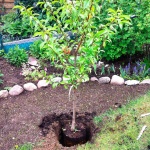
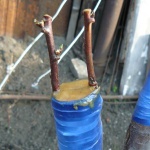
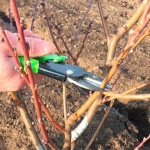
Frost resistance and the need for shelter
The frost resistance of the tree is good, so it is not afraid of temperature drops to -20 ... -25 °. The peach does not need shelter, but when grown in a region with severe and prolonged frosts, it may be needed. For shelter, burlap or agrofibre is used, which is removed as soon as the frosts leave.
Disease and pest resistance
Due to its moderate immunity, the peach tree tolerates standard diseases of fruit crops. Most often, the tree is prone to powdery mildew and curliness, but it gets away from fungal diseases.
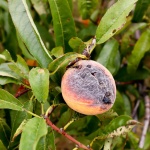
Requirements for soil and climatic conditions
Fluffy early peach loves sun and warmth, however, it can grow with a short shade. In addition, the variety is moderately drought tolerant, so watering should be controlled.
It is most comfortable for a tree to grow on fluffy, breathable, moisture-permeable and fertile soils. Garden soils are considered preferred.
